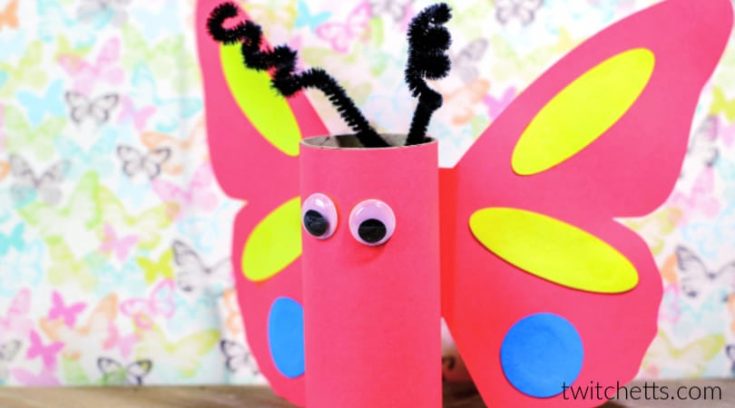
Learning how to knit fair isles is simple when you understand the basics. Learn about Gauge and the number of stitches, as well how to choose colors and floats. After you've learned the basics, it's easy to practice and get the results you want. It's so easy! After mastering the basics of the technique, you'll be able create an incredible project to proudly show off.
Stitch count
Fair Isle's knit projects will have a higher stitch count than standard knit projects. This is due to the inclusion of floats that tend to pull the fabric tightly, making the stitches look more square. You can use the same colorwork pattern that you will be using to create a swatch to determine the gauge of your project.

Gauge
Fair isle knitting is dependent on gauge. It's the measurement in width of fabric. It can vary. Measure the fabric at its center, and do not trim edges.
Color choice
A Fair Isle knit is a success because it takes care of the color choice. The Fair Isle pattern has alternating rows of one-colored shades. You can alter the color scheme by using contrasting stripes. Consider the hue and tonal properties of each color when choosing colors.
Floats
Fair Isle floats in knitting can be handled in several ways. One method is to twist the yarns halfway. This works best if you have a six stitch stretch of one yarn. For the last three, you can knit three stitches using one color. This is not as cool for the back and can be tedious.
Charts
A knitting chart is helpful when you are knitting a fair-isle design. A fair isle knitting map shows you where to knit each stitch instead of just writing them out. This helps you to visualize knitting and also helps you understand how to read knitting instructions. A knitting diagram will help you create offset left-leaning decreaseds. This can be hard to determine when following written instructions.

Changing colors
It is crucial to learn how to change colors while knitting fair isle A row should not contain more than 3 colors. Limit the number of colors in a color block to eight stitches. The finished fabric may be distorted if you drag strands from one row to another while changing color.
FAQ
What are good hobbies for seniors?
Senior citizens should be able to enjoy activities that they are passionate about. Senior citizens should keep active through participation in physical and sports activities.
They may wish to join clubs, where they can find others who have similar interests. They'll be less lonely as they get older.
Seniors must also be on the cutting edge of new trends. For example they could keep up to date with fashion, art music, literature, politics, and so forth.
Why do we need hobbies
Hobbies are an integral part of our daily lives. They allow us to relax, unwind and think creatively. We also have the chance to learn new skills and pursue lifelong passions.
Hobbies allow us to find meaning in our lives.
They are often a great way to spend free time when you don't have much else going on.
They are fun!
If you don't find time for hobbies, it's likely that you don't have enough time for any other activities.
So take a look at all the options available to you. You might consider starting a hobby if you don't already have one.
What are the most popular hobbies right now?
Popularity isn’t always a positive thing. It is often used as an excuse for mediocrity. Many people have no time for hobbies or other interests. They are too busy trying to make ends meet. So what should you do if you don't have much free time? You could also start your own business.
This isn't an easy task. It takes a lot of work to make your dream a reality.
So if you're looking for something more exciting than running a business, you should consider pursuing a hobby.
Hobbies do not have to be limited to creative pursuits. There are many kinds of hobbies. There are many hobbies available, including:
-
Gardening
-
Cooking
-
Photography
-
Reading
Can I make a living from my hobby and earn money?
Many hobbies can help you make extra money.
If your hobby is a passion, you may be able to sell related items.
If you are a stamp collector, you might want to start a website that sells rare stamps.
You can make extra money without the hassle of buying and selling stamps.
You could also create a YouTube channel to talk about your hobby.
This allows you to share what is important to you with others, and possibly generate additional revenue through premium content.
How do I start my new hobby?
The first step toward starting any new hobby is to decide what kind of activity you'd like to pursue.
Passion is key once you have chosen your topic.
It's important to understand why you want to start a particular hobby. This will help you to find your purpose and direction.
Once you have determined what hobby you wish to pursue, you can plan your next steps.
Think about what equipment you'll need to purchase.
Consider whether classes or seminars are necessary.
You must ensure you have enough room for your hobby.
You might also consider joining a club. These groups often offer advice and support.
Also, consider how much money your hobby would cost.
What kind of hobbies is best for introverts.
Introverts can concentrate on one thing at the same time. They are more comfortable with solitary activities, such reading, writing, music, and watching movies.
They also enjoy spending quiet time alone. They are not social creatures and don't want to be around people all day. They can even become bored when they're surrounded by people.
Introverts will often choose hobbies that require them alone. They might enjoy reading, listening to music or taking photos, painting, writing poetry, and other such activities.
Some introverts even choose to live alone. They can focus on their hobbies and not be distracted by other people.
Statistics
- A new survey by Pew Research Center of teens ages 13 to 17 finds that 36% of girls feel tense or nervous about their day every day; 23% of boys say the same. (pewresearch.org)
- Almost 80% of people claim to have no hobby. (hobbylark.com)
- 37% Video Games 36% Travel 36% Health and Fitness (quizexpo.com)
- The intensity of the dialogue partners' bond at the end of the forty-five-minute vulnerability interaction was rated as closer than the closest relationship in the lives of 30 percent of similar students. (time.com)
- Much of this decline reflects the fact that teens are less likely to work today than in the past; among employed teens, the amount of time spent working is not much different now than it was around 2005. (pewresearch.org)
External Links
How To
How to Learn a Musical Instrument
There are many different ways to learn how music is played. You could either go to a school, buy a book, take lessons from someone who plays an instrument, watch videos online, etc. Here are some tips and techniques to help you learn if your goal is to create your own learning path.
-
Find something that interests or appeals to you. Try another instrument if you don't love any of the ones you see. It is difficult to enjoy an instrument if it is not something you are interested in.
-
Be patient. Learning anything new takes time. Do not expect to be able to master every aspect of the subject immediately. Keep practicing each day.
-
Keep practicing regularly. Even when you feel tired, continue practicing. This will make sure you don't forget the lessons you have learned.
-
Choose a good place to practice. Ideal is a quiet area where you don't have to disturb anyone else. Also, make sure that there aren't too many distractions. Avoid loud music, for example.
-
Have fun. Music is meant for enjoyment. So make sure that you always have fun while practicing. It will make you more motivated to keep going.
-
Set goals. You will know what you need to do if you have goals. You will never be ashamed to fail.
-
Keep track of your progress. Keep track of all your successes and failures. You'll be able to learn and improve as you go.
-
Pause. Sometimes you just need to take a break. Taking breaks will give you time to think about things.
-
Ask questions. If you have any questions or doubts about the instrument, ask other people. They may be able to help you out.
-
Listening is the best method to learn. Musicians often listen to music they like and try to imitate it. This allows them to understand the basic ideas behind the song.
-
Read books. Read books to learn more than just watching videos or learning from classes. Books often contain information you can't find elsewhere.
-
You can join a band. Playing with others forces you to practice more. Plus, it will be easier to meet people with similar interests.
-
View tutorials. Tutorials are short videos which explain many topics in great detail. Tutorials are short videos that focus on one part of the instrument. Watching tutorials can help you understand difficult parts of the instrument.
-
You can try different methods. Some people prefer to learn through lectures. Others prefer to read. Experiment until you find what works best for you.
-
Practice makes perfect. There is no way to be an expert overnight. Instead, it takes time and effort to become proficient enough for you to succeed.
-
Play along with other musicians. Listening to your fellow musicians perform their favourite songs can help you learn quicker.